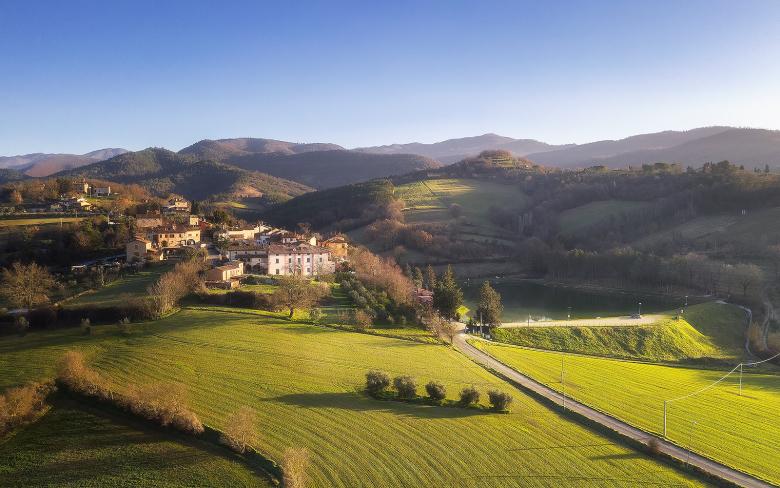Palazzo Margherini Graziani
Context: rural
Date: 17th century
Located on the slopes of a hill rising over the upper Tiber valley, the Palace Margherini Graziani enjoys a beautiful panoramic view.
Date: 17th century
Located on the slopes of a hill rising over the upper Tiber valley, the Palace Margherini Graziani enjoys a beautiful panoramic view.
The palace rises on a stronghold belonging to an earlier building, with three floors, one of which is a mezzanine. The principal façade, in late Renaissance style, that for its richness is significantly different from the other ones, includes a three-arched arcade on the second and third floor. Thanks to its slender columns, it refers clearly to the Vasari loggia of the Bufalini castle, to whom the palace seems however stylistically linked.
The front of the villa is then entirely covered with pilasters (semi-columns that are slightly protruding on the wall surface) and a string-course so to build a sort of grid bearing the pattern of square windows framed in stone serene, the slightly hollow niches and a series of walled niches on the ground floor.
The front of the villa is then entirely covered with pilasters (semi-columns that are slightly protruding on the wall surface) and a string-course so to build a sort of grid bearing the pattern of square windows framed in stone serene, the slightly hollow niches and a series of walled niches on the ground floor.



























.jpg/85c435d7-90fb-3c60-3171-813a2b604e02?width=780)


